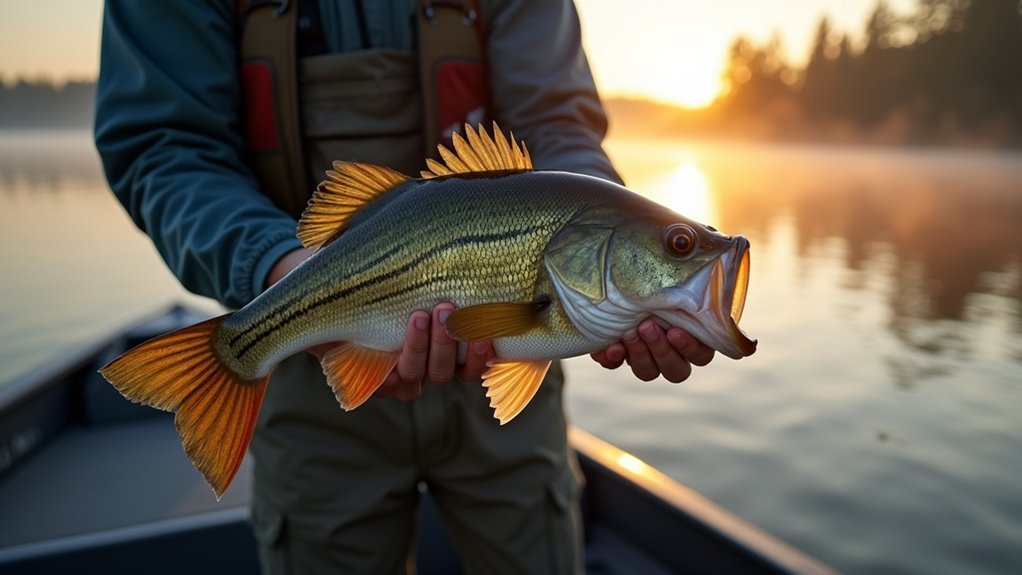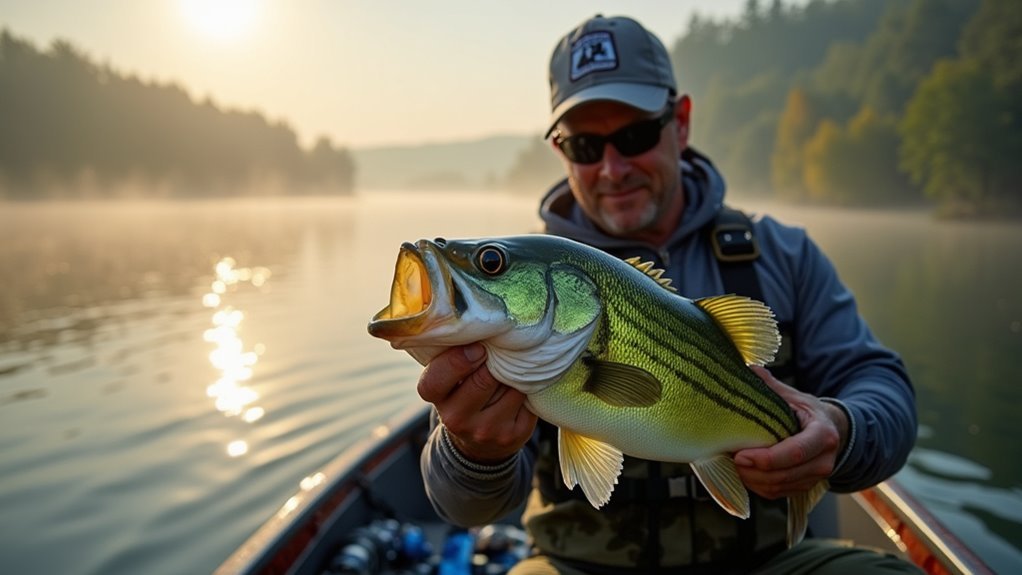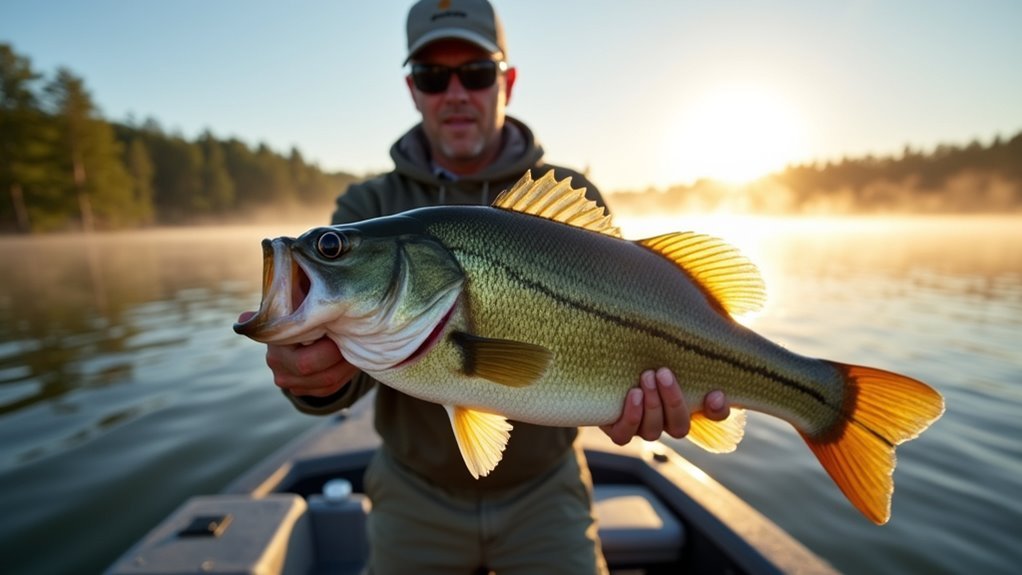To master bass handling, we always wet our hands first to protect their slime coating. We grip the lower jaw with our thumb inside the mouth, never squeezing too hard. For bigger catches, we support their belly with our other hand. We’ll move the fish forward in water to push oxygen through their gills before release. Avoiding dry hands and hot surfaces guarantees these beauties survive to fight another day. These techniques will transform your fishing experience.
The Basics of Safe Bass Handling

When you’re out on the water chasing that trophy bass, knowing how to properly handle these feisty fighters is just as important as catching them. We’ve learned this lesson the hard way over years on the water.
Always wet your hands before touching a bass – it protects their protective slime coating. Grip them by the lower jaw with your thumb inside their mouth, but don’t squeeze too hard. For bigger fish, support their belly with your other hand.
Mastering the Vertical and Horizontal Holds

Although there are many ways to handle a bass, mastering the vertical and horizontal holds is essential for both the fish’s safety and your success as an angler. We’ve learned through countless fishing trips that proper technique prevents injuries to those trophy catches we all dream about.
- For vertical holds, grip the lower jaw firmly but gently with your thumb inside the mouth
- With horizontal holds, support larger bass with one hand under the belly while gripping the lip
- Always use wet hands to protect the fish’s protective slime coat
- Keep the bass’s body level when held horizontally to prevent jaw damage
Proper Breathing Techniques for Bass Recovery

Beyond mastering the holds, understanding how to help a bass breathe properly during handling can make the difference between a successful release and a stressed fish. We’ve all been there—excited about a catch but worried about the fish’s wellbeing.
| Recovery Step | Why It Matters |
|---|---|
| Keep fish in water | Prevents oxygen deprivation |
| Hold by lip gently | Maintains control without stress |
| Move fish forward | Pushes water through gills |
| Watch gill movement | Indicates recovery progress |
| Release when active | Guarantees fish has enough strength |
When we revive bass before photos or weighing, they’re much livelier upon release. I’ve seen countless fish swim away strong after proper breathing recovery.
Common Handling Mistakes to Avoid

Despite our best intentions, many anglers fall into common handling traps that can harm bass and reduce their survival rates. We’ve all been there – excited about a catch and forgetting proper handling techniques in the moment.
In our excitement, we often forget that how we handle bass today determines if they’ll be there tomorrow.
- Holding bass vertically by the jaw for too long, which can damage their mouth and spine
- Using dry hands that remove the fish’s protective slime coat
- Laying bass on hot, dry surfaces like boat decks or docks
- Excessive squeezing or gripping that damages internal organs
Remember when I caught that 6-pounder last summer? I nearly made these mistakes myself. Proper handling guarantees they’ll be there for future generations to enjoy.
Frequently Asked Questions
Can I Use Gloves When Handling Bass?
We don’t recommend gloves when handling bass. They can remove the fish’s protective slime coating. Instead, wet your hands before touching the fish to minimize scale damage.
How Long Can I Safely Keep Bass Out of Water?
Want your bass to survive? We should keep them out of water for less than 30 seconds whenever possible. The less time they’re exposed, the better their chances of recovery after release.
Do Bass Have Teeth That Can Hurt Me?
Yes, bass have small, sandpaper-like teeth that can scrape our hands, but they rarely cause serious injury. We recommend wet hands when lip-gripping to avoid minor abrasions.
Should Handling Techniques Differ Between Largemouth and Smallmouth Bass?
Yes, we should handle smallmouth and largemouth bass differently. Smallmouths have more delicate jaws that can be damaged by vertical holds, while largemouths tolerate jaw holds better with proper technique.
Can Improper Handling Affect a Bass’s Ability to Spawn?
Like a crack in nature’s blueprint, improper handling can damage a bass’s reproductive organs. We’ve seen jaw injuries and internal trauma directly impair spawning success, potentially reducing future generations in our waters.
Conclusion
We’ve reeled in quite a few tips here, and now it’s up to you to put them into practice. Remember, a fish out of water is like a bird without wings—neither belongs there for long. By mastering these handling techniques, we’re not just preserving our catch but protecting the future of our favorite sport. Treat every bass with care, and they’ll be there for generations of anglers to come.